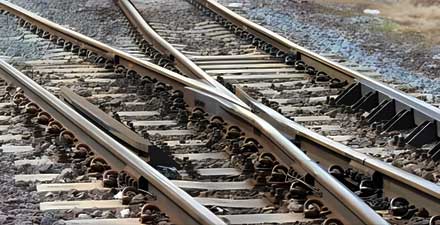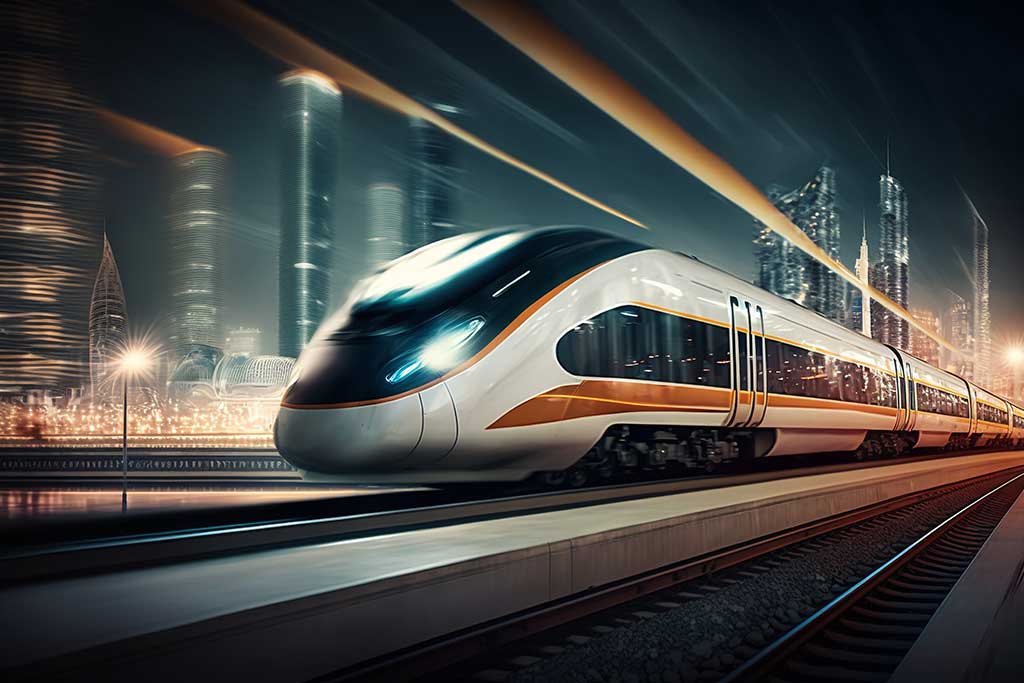In the intricate world of railway
engineering, a critical component often goes unnoticed: the railway turnout system. These mechanical marvels, also known as switches or points, play a pivotal
role in guiding trains from one track to another, ensuring the smooth flow of
rail traffic and enabling the intricate networks that crisscross continents.
The Anatomy of a Turnout
At
the heart of a turnout lies the switch rail, a movable rail that diverges from
the main track, creating a junction or branching point. The switch rail is
connected to a stock rail, which remains fixed in position. Together, these two
rails form a V-shaped structure called the frog, where the wheels of the train
transition from one track to the other.
Turnouts
come in a variety of configurations, each designed to meet specific operational
needs. The most common type is the single turnout, which allows a train to
divert from one track to another. For situations where three tracks converge, a
three-way turnout is employed. And in complex rail yards, multiple slip
switches enable trains to navigate intricate networks of tracks.
The operation of a turnout typically involves a switch rod, connected to the
switch rail, that is moved by a variety of mechanisms. These mechanisms can
include manual levers, hydraulic or electric drives, or even remote control
systems for high-speed railways. To ensure the safe and secure movement of
trains, turnouts are equipped with locking mechanisms that prevent accidental
movement.
Turnouts
are indispensable components of the railway infrastructure, enabling the
efficient and flexible movement of trains. However, they also present unique
challenges due to the high stresses and wear they endure from the constant
passage of heavy locomotives and rolling stock. Maintaining turnouts in proper
working condition is crucial for preventing derailments and ensuring the safety
and reliability of rail operations.
In
recent years, advancements in turnout technology have focused on improving
durability, reducing maintenance requirements, and enhancing safety features.
These advancements include the use of new materials, innovative designs, and
sophisticated monitoring systems that detect potential faults before they can
lead to failures.
Types of Turnouts
Turnouts
come in a variety of configurations, each designed to meet specific operational
needs. The most common type is the single turnout, which allows a train to
divert from one track to another. For situations where three tracks converge, a
three-way turnout is employed. And in complex rail yards, multiple slip
switches enable trains to navigate intricate networks of tracks. Operation and Control
The operation of a turnout typically involves a switch rod, connected to the
switch rail, that is moved by a variety of mechanisms. These mechanisms can
include manual levers, hydraulic or electric drives, or even remote control
systems for high-speed railways. To ensure the safe and secure movement of
trains, turnouts are equipped with locking mechanisms that prevent accidental
movement.
Significance and Challenges
Turnouts
are indispensable components of the railway infrastructure, enabling the
efficient and flexible movement of trains. However, they also present unique
challenges due to the high stresses and wear they endure from the constant
passage of heavy locomotives and rolling stock. Maintaining turnouts in proper
working condition is crucial for preventing derailments and ensuring the safety
and reliability of rail operations.
Advancements in Turnout Technology
In
recent years, advancements in turnout technology have focused on improving
durability, reducing maintenance requirements, and enhancing safety features.
These advancements include the use of new materials, innovative designs, and
sophisticated monitoring systems that detect potential faults before they can
lead to failures.
Railway turnout systems, though often
overlooked, are the unsung heroes of rail infrastructure. Their intricate
design and critical role in directing trains ensure the smooth and safe
operation of railway networks worldwide. As technology continues to evolve,
turnouts will undoubtedly become even more efficient, reliable, and resilient,
safeguarding the future of rail transportation.
Veera Techno Trec proudly stands out as the best turnout manufacturer in India, setting the benchmark for reliability and quality in the industry. As a leading player in the market, we are dedicated to delivering top-notch turnout systems that adhere to the highest standards of precision engineering and cutting-edge technology. Our reputation as the best turnout manufacturer in India is built on a rich legacy of excellence, ensuring that our clients receive robust, durable, and efficient solutions for their railway networks. With a customer-centric approach and a commitment to innovation, Veera Techno Trec continues to be the preferred choice for those seeking the best turnout systems to enhance the efficiency and performance of rail infrastructure in India. Please visite our website for more details and enquiry.



Comments
Post a Comment